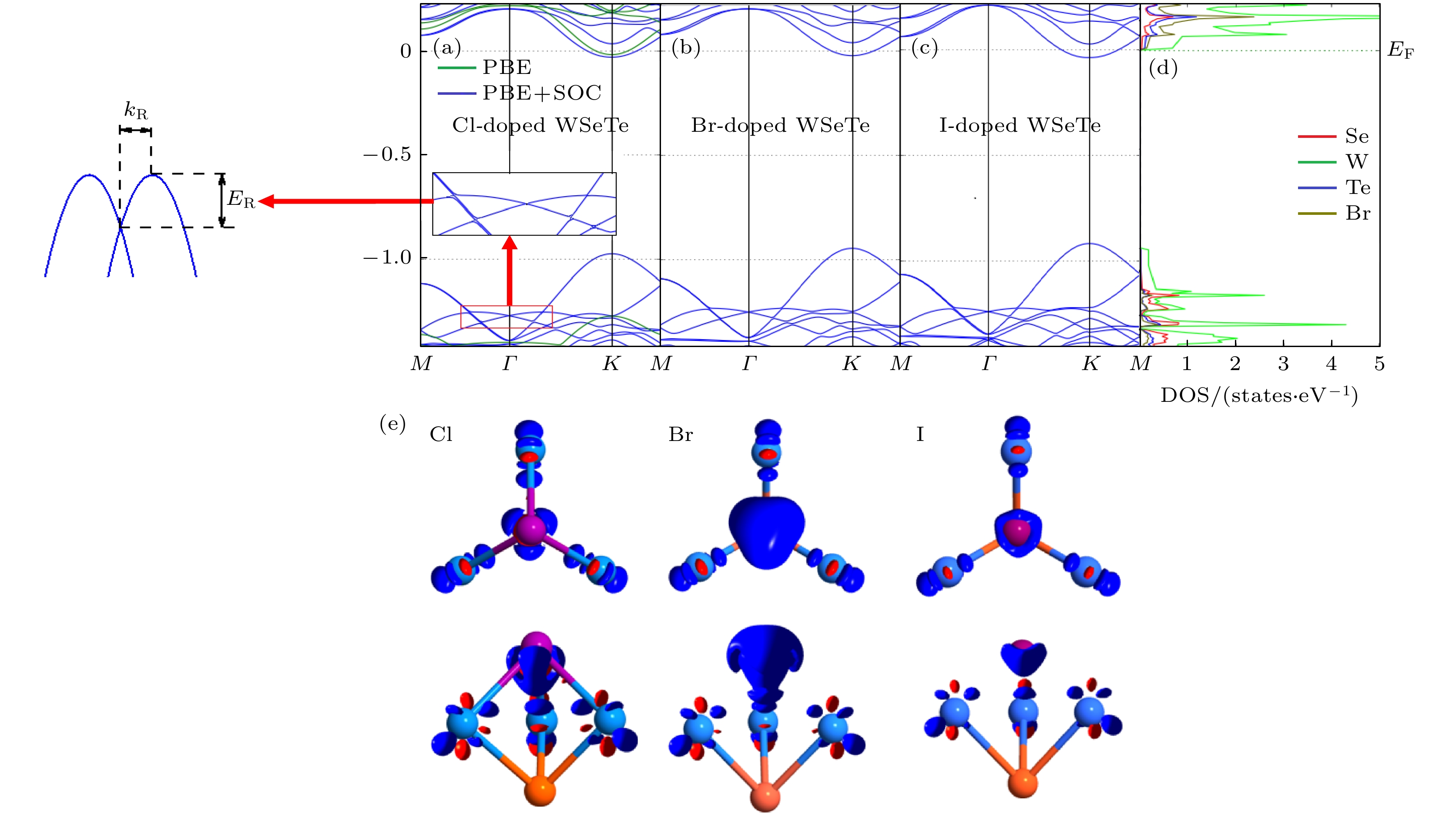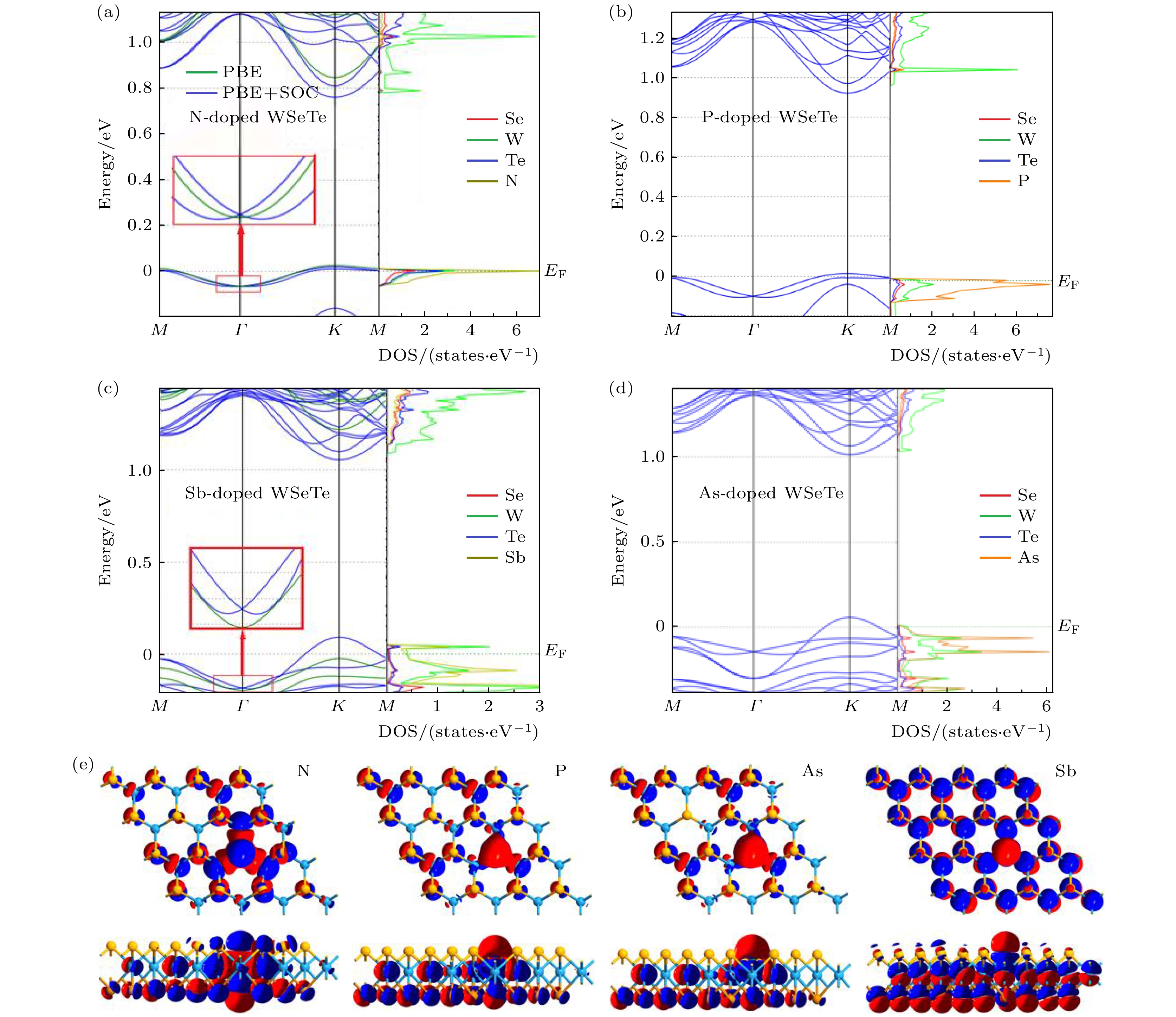Based on the first principles calculations, the effects of substitutional doping of nitrogen, halogen and 3d transition metal elements on the electronic structure of monolayer Janus transition metal dichalcogenides WSeTe are studied in this paper, where the VASP software package is used based on density functional theory to perform calculations through using both the projector augmented wave method and the GGA-PBE functional method. A monolayer WSeTe hexagonal crystal system with 4 × 4 supercells is established, which contains 48 atoms. When VA (VIIA) element substitutes for monolayer WSeTe, one of the Se atoms is replaced with a nitrogen (halogen) atom; when the 3d transition metal element substitutes for monolayer WSeTe, one of the W atoms is replaced with a transition metal atom. Through the analysis of band structure, charge transfer and magnetism, it is found that VA (VIIA) nonmetallic elements doped monolayer WSeTe due to the introduction of the hole (electronic) doped, makes the Fermi level shift downward (upward), thus transforming into a p(n) type semiconductor. The Ti and V element substitutional doped monolayer WSeTe will present semiconductor-metal transformation. A doping for each of Cr, Co, Mn, Fe element doesn’t lead semiconductor material properties to change, but the each of Co, Mn, Fe element doped monolayer WSeTe can create a band gap of less than 20 meV. The VIIA (VA) non-metallic element and 3d transition metal element doped monolayer WSeTe will not have a huge influence on the original geometric structure of the material. Due to the charge transfer and doped atoms on the top of the valence band hybridization phenomenon, the Rashba spin splitting intensity near the
Γpoint of the top valence band increases with the increase of the atomic number of the doped atoms in the same main group when VIIA and VA non-metallic elements are doped. Moreover, the increase in atomic number and charge transfer have a greater influence on the strength of Rashba spin-orbit coupling than the change in electronegativity. The 3d transition metal element substitution doped single-layer WSeTe has obvious spin polarization phenomenon, which produces valley polarization near the Fermi level and introduces magnetism. In particular, since Cr-doped WSeTe retains the original semiconductor properties of WSeTe and has a large energy valley polarization, it may have a wide range of applications, such as in the field of spintronic devices. The monolayer WSeTe doped separately with Cr, Mn and Fe element produces an impurity band with fully polarized spin electrons in the band gap. The results are of great significance in systematically understanding the properties of monolayer WSeTe doping model and can provide theoretical reference for designing the monolayer WSeTe based electronic devices.














 下载:
下载:


